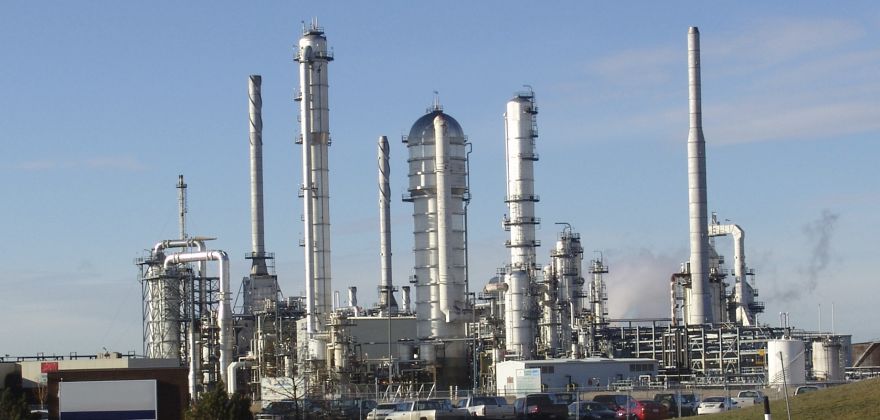Heat Exchangers for Batch Reactors

Many chemical products are produced in batch processes, typically in a stirred tank reactor. Most processes will require heat transfer into and/or out of the reactor, for the following reasons:
- to bring the batch up to reaction temperature
- to maintain batch temperature during endothermic or exothermic reactions
- to cool the batch once the reaction is complete
The efficiency with which heat can be added to or removed from the batch will have an economic impact (effect on batch cycle time) and may also have safety implications (where the reaction exotherm could lead to a runaway condition).
At small scale, the heating and cooling duties can be achieved using a coil immersed in the reactor and/or a jacket attached to the outer surface. However, as the scale of the process increases, the tank surface area to volume ratio reduces, making it harder to fulfil the required duty by these methods. For larger-scale processes, therefore, it is normal to utilise a separate heat exchanger, pumping the batch through an external loop. The typical arrangement of such a system is illustrated in Figure 1.

Figure 1
The arrangement shown in Figure 1 leads to some constraints on the design of the external heat exchanger, in order to suit the layout of the plant; to ensure that the batch contents can be easily drained off between batches; to allow the use of both hot and cold service fluids if necessary:
- batch contents flows on tubeside
- vertical orientation
- single tube pass
- tube length roughly equal to the height of the reactor
These constraints can present a problem to the heat exchanger designer. In order to optimise the heat transfer on the tubeside, a high velocity is preferred. Since the tubeside fluid is pumped in a relatively short loop, plenty of pressure drop is usually available, but the single pass arrangement and relatively short tube length may restrict the maximum velocity which can be achieved. Once the maximum tube length is utilised, the only way to increase the surface area is to use more tubes. As the number of tubes increases, the tubeside velocity (and heat transfer coefficient) reduces.
As a result of the above constraints, large and inefficient heat exchanger designs are common in this service. However, this can be avoided by considering the use of tube inserts. Such devices are ideal for single-pass arrangements, since tubeside heat transfer can be optimised independently from tubeside velocity. This promotes efficient heat transfer and minimises the overall size of the heat exchanger.
The effectiveness of tube inserts can be illustrated via an example. Heat exchanger designs for a batch reactor are compared in the table below. The reactor contents have a viscosity of 1 cP and the service fluid is cooling water.
| Unit | Without Inserts | With Inserts (hiTRAN®) | |
| Heat Duty | kW | 252 | 252 |
| Constraints: | |||
| Maximum tube length | m | 2.44 | 2.44 |
| Allowable pressure drop | kPa | 50 | 50 |
| Heat exchanger size: | |||
| Actual tube length | m | 2.44 | 1.80 |
| Shell diameter | m | 0.889 | 0.255 |
| No. of tubes (19.05mm OD) | 1039 | 74 | |
| No. of tube passes | 1 | 1 | |
| Surface area | m² | 148 | 7.7 |
| Total weight | kg | 3200 | 300 |
| Thermal/hydraulic data: | |||
| Overall heat transfer coefficient | W/m²K | 29 | 547 |
| Tubeside heat transfer coefficient | W/m²K | 39 | 2170 |
| Tubeside pressure drop | kPa | 2 | 30 |
The difficulty of designing the exchanger without tube inserts is clear from the table above. The maximum tube length constraint makes it impossible to use the available pressure drop effectively, leading to laminar flow on the tubeside and very low heat transfer coefficient. The resulting exchanger is large, heavy and inefficient.
By contrast, the use of tube inserts allows high heat transfer coefficients to be achieved within the allowable pressure drop, and the exchanger is actually shorter than the maximum length allowed. The overall result is a compact and efficient heat exchanger which meets all the requirements of the process.




